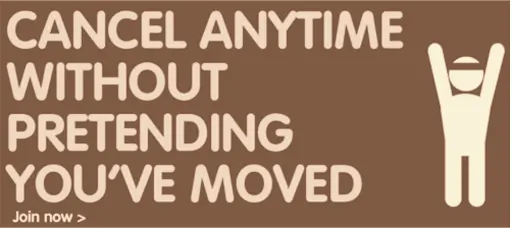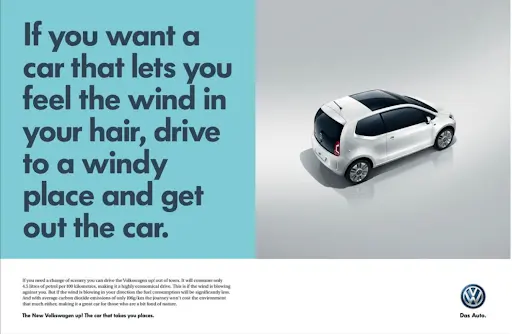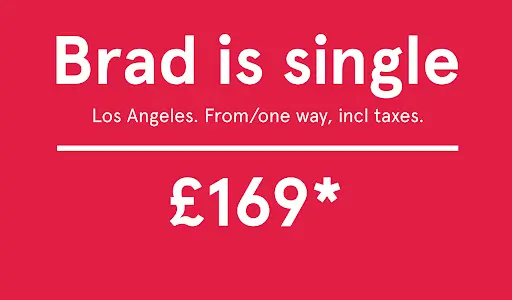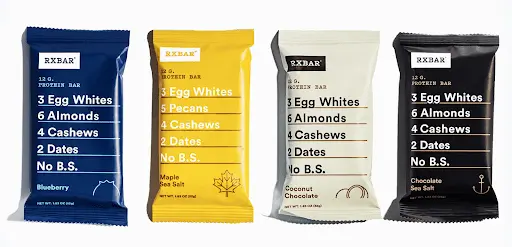As the impact of high quality online content on customer acquisition and company growth becomes increasingly apparent, so too do jobs in content marketing. One of the content producers holding a key position on the content marketing team is the copywriter.
Copywriting is a varied, creative, and dynamic skill. On an average working day, a copywriter can be working on advertising slogans in the morning, editing a pitch deck after lunch, and writing a blog article to address customer questions in the afternoon.
If you love language and could imagine using different writing styles to meet the multifarious needs of a company or client, copywriting could be the career that ticks all your boxes. Working in this profession is a unique opportunity to flex your creative muscles while making a real impact on the company’s output and success. It can be pretty fun, too!
If you’ve been thinking about utilizing your writing skills to embark on this diverse and creative career, then keep reading. In this guide, we’ll be answering all of your questions on the topic of copywriting in all its guises, as well as providing you with a comprehensive overview of the main steps you’ll need to take to launch a career in the field.
Here’s a clickable list, so you can go straight to the section most relevant to you.
- What is copywriting, and what does a copywriter do?
- What is the difference between copywriting and content marketing?
- What are the different types of copywriting?
- What are the qualities of good copywriting?
- Copywriting examples
- What skills do you need to be a copywriter?
- How to become a copywriter
- Key takeaways and next steps
1. What is copywriting, and what does a copywriter do?
Copywriting is the art of producing text for promotional, marketing, instructional, or advertising purposes. The goal of this content is typically to persuade, inspire, entertain, educate, or inform a reader in order to increase brand awareness or authority, sell a product, describe a course of action, or to convince a person or group of people to take a specific step.
This text is produced by a copywriter. Copywriters can work as members of in-house marketing, editorial, or product teams, for copywriting agencies, or they can work for themselves as freelancers. Both agencies and freelance copywriters typically work for a variety of different clients fulfilling each company’s different copywriting needs. Although in-house copywriters will only have one employer, they may often be asked to produce copy for a multitude of departments or teams within that organization.
Although copywriting isn’t exclusive to online platforms, the explosion of online content and the increase in users consuming content online means that today a large majority of copywriters work in digital marketing teams. In this context, the copywriter works closely with the SEO specialist and marketing manager to produce the text needed to boost the online presence of a brand, grow an audience, and convert users into customers.
2. What is the difference between copywriting and content marketing?
While both copywriters and content writers require a deep understanding of language and communication, a passion for storytelling, and a love of prose, the stand out difference between the two roles is the goal of the content. While a copywriter is typically writing to persuade a reader to perform a certain action, a content writer seeks to educate or inform the readers with their text.
It’s for this reason that copywriting tends to be more concise. Copywriters might produce the copy for an advertisement, a slogan, or a tagline which excites, stimulates, and persuades in a matter of moments. In contrast, content writing is longer, with a content writer seeking to educate their readers via articles, blog posts, ebooks, reports, or white papers, with extensive resources cited to support their arguments and add authority to their content. When this is done successfully, a reader is persuaded over the long term of the trustworthiness of the company and its expertise.
Both copywriters and content writers have the same overall goal: to convert a reader into a customer. However, a copywriter is seeking to do that with urgency, over a much shorter period of time, and therefore with a much shorter piece of writing. A content writer is playing the long game: building trust and demonstrating authority and knowledge in the field, via a long and well-researched piece of content.
Although a copywriter will likely have some understanding of SEO, a content writer will need to be well-versed in SEO best practices, and will typically work closely to the briefs set by the SEO specialist. A copywriter is not needed to have such a deep understanding of SEO, as they will typically be working with very short texts that will not rank in search engine results.
Although there are clear distinctions between the two roles, many of the skills of the two positions overlap, and you’ll often find companies advertising for one of these roles but actually seeking the skills and flexibility of both. Depending on the size of the company and the demands of the marketing and product teams, a writer will frequently work as both copywriter and content writer for the same organization.
3. What are the different types of copywriting?
Here are some of the most popular types of copywriting and content writing that in-house and freelance copywriters will produce in order to:
- Reach new audiences
- Educate users on an industry
- Communicate the brand’s vision
- Persuade a potential customer of the benefits of a service
- Build trust
We’ll go over these types in detail over the next few sections.
Blogs
A company blog publishes posts to educate, inform, and inspire readers on topics that are relevant to the product or service the company offers in order to increase the brand’s visibility and attract more users to their site. In addition, a blog might be used for company and corporate updates and industry news.
Blogs are also a great opportunity for a company to produce informative how-tos or answer FAQs in detail which teach users about a product, explain a service, or demonstrate specifically and with easy-to-follow steps on how a feature works.
Ebooks
An ebook is an opportunity for a company to cover a topic in depth, demonstrating its expertise in a particular area, while passing on useful information, techniques, or advice to readers to help solve a problem or answer commonly-asked questions. The brand therefore becomes established as a trusted source for users when looking to solve related problems in the future.
Another purpose behind ebooks is that they can be a way for a company to collect leads. An ebook can be ‘gated’, meaning it is only available for download once a user has provided an email address. With high-quality pieces of downloadable content such as ebooks, a company can collect user email addresses to be used later for email marketing purposes or newsletters promoting other products or services.
Social media posts
Social media is an opportunity for businesses to directly engage with their existing customers, reach new audiences, and promote their vision, product, or service in a recognizable voice and tone. The copywriter’s role here is usually to provide a relatively short entertaining, informative, or persuasive text that accompanies and corresponds with a posted image.
A seasoned copywriter will go above and beyond a descriptive two-liner, and instead seek to additionally involve the readers in a conversation, encourage audience participation, trigger an emotional response from the brand’s followers, and include a powerful call to action (CTA) that prompts the reader to engage further with the brand.
Depending on which social media platform the text is being provided for, different styles of writing might be employed. A copywriter is expected to have knowledge of the styles popular with each network, and how best to engage with the different audiences those networks attract.
Newsletters
A newsletter is a customizable and trackable email that brings high-quality content directly to the user’s inbox. A company can use newsletters in a variety of ways, including:
- Sharing company news or events
- Highlighting products or features
- Drawing the user’s attention to content on the company blog or social media pages
- Tracking user interest and engagement
A newsletter is an opportunity for the copywriter to use more personable, friendly language than a more formal article or blog post and to speak directly to the user about their challenges. In addition, the copywriter can customize the content of automated emails to make them appear to have been written to a specific individual, which encourages interaction and builds trust.
4. What are the qualities of good copywriting?
Having a good understanding of the key qualities of great copywriting will be a huge help as you prepare for a career in this exciting content production role. With this knowledge, you’ll be able to focus on what’s really important to the site’s readership, and practice the techniques that guarantee your copy makes the right kind of impact on potential customers.
Let’s take a look at what makes for great copywriting.
Communicates clearly
Ultimately, all copy is trying to tell us something. However, learning how to communicate your message clearly and succinctly takes time and practice. When you’re starting out it can be tempting to show off your writing skills, but unless throwing in that Latin phrase really adds something to the message you’re sending, it’s best to stick to terminology that speaks to everyone. Essentially, your role is to enable a reader to take away what they need to know quickly and with ease—and, in the best cases, it should be fun to read, too.
Puts the reader first
It’s easy to forget sometimes who we’re writing copy for, especially when a client’s strict deadline is looming, or your CEO is keen to share their wisdom. However, irrespective of who has requested the content, it’s crucial to keep the person on the other end of your text in your mind at all times: the reader. Without the reader’s attention, the goal of the copy—to reach new users, build trust, or generate interest—will be much harder, if not impossible, to reach.
Sounds natural
There’s a reason why search engines rank high-quality content above content that simply contains the right keywords. It’s because writing that sounds like it has been written by a robot does not connect with audiences, and therefore does not build trust, convert customers, or demonstrate expertise or authority. One of your advantages as a human is that you can speak the language of your audience. You can convey empathy for their problems and, because you’ve been there yourself, you can also help solve them.
Tells a story
Storytelling has gained increasing attention in marketing circles over the years, as marketing teams realize how well this works as a tool to influence, teach, and inspire. Storytelling builds connections between people and ideas: it helps a writer demonstrate empathy, and makes a brand seem relatable.
The great thing about storytelling is that it demonstrates to the reader that the brand not only understands their issues inside out, but it also knows how to solve them. When done skillfully and sincerely, storytelling builds trust with users which enables a marketing team to grow their readership and customer base.
5. Copywriting examples
Here are some examples of real-world copywriting that we loved!

Rather than promoting a supermodel body or an unrealistic fitness routine, Gymit’s copywriter has tapped into the mindset of a real gym-goer. In this ad, they’ve recognised a very real problem–canceling a gym membership–and addressed it head on, with humor and empathy.

Volkswagen uses its advert for the new Volkswagen up! to poke fun at traditional car advertising, while simultaneously promoting the reliability of its own vehicles. It’s not just funny, it’s on brand and fits nicely with the tagline of the vehicle being promoted: “The car that takes you places.”

When Brad Pitt and Angelina Jolie broke up in 2016, Norwegian Airlines released this genius advert promoting a sale on flights to Los Angeles. Due to the high-profile nature of the split, readers didn’t need any other information to understand what the advert was referring to. It was eye-catching, amusing, and very clear what the message was.

Going against the grain of other health foods and in particular protein bars, RXBAR decided to advertise the simplicity of its product, rather than overwhelming consumers with reams of information or ingredients on its packaging. The result? Consumers felt like they were being given all the facts, without any sugar-coating or unpronounceable extras which, in turn, built trust between customer and brand.
6. What skills do you need to be a copywriter?
To succeed as a copywriter you’ll need to embody a range of soft and hard skills. You’ll not just be playing an integral role within a marketing team, but also assisting the design, product, corporate communications, and customer service teams. As a company copywriter, you’ll find you could potentially be called upon by almost any part of the organization that requires long or short form customer-facing or B2B copy.
Strong writing skills
It probably goes without saying, but a copywriter needs to possess strong writing skills to excel in this role. A love of words and language, combined with a broad vocabulary and a passion for crafting compelling turns of phrase will ensure your prose is not only engaging customers, but that you’ll love what you do on a day-to-day basis.
Communication skills
As a copywriter, you’ll be receiving requests from numerous teams within your organization who are likely to demand very different styles of writing for a wide range of purposes. This means you’ll need to be approachable to all levels of the company, and be able to communicate what you need from them in order to perform your job to your best ability. If you choose to work freelance as a copywriter, your communication skills will be even more important. You’ll need to be highly responsive to work requests, guide your clients towards providing comprehensive briefs, and listen carefully to their wants and needs in order to meet, and hopefully exceed, their expectations.
Research skills
As a copywriter, you can’t be expected to know everything, however you will certainly be expected to write about a very wide range of subjects, many of which you may have no prior knowledge of. This is where your research skills come to the fore. A copywriter needs to be able to find, digest, and interpret information at speed in order to distill it into the copy requested by the team or the client. Perhaps a client requests a short blog post on current threats to the rainforest. If this is not your area of expertise, you’ll need to find research papers, interviews with scientists, and any other relevant resources pertaining to the subject that you can summarize, draw conclusions from, and use as citation to perform the task at hand. Linking to all the sources you’ve used, and clearly referencing the work of others will also be a key part of your job.
Creative thinking and adaptability
As we’ve mentioned, copywriting requests can come from different departments within an organization—departments which will all have different purposes for their content. This requires a copywriter to be extremely adaptable, switching quickly between subjects and styles in order to meet deadlines throughout the week—or even the day! Creative thinking is an integral part of this role: finding new ways to inform, entertain, and persuade readers, while maintaining the voice, tone and messaging of the brand.
7. How to become a copywriter
If you’re excited by the idea of launching a career as a copywriter, read the following sections for some simple steps you can take right now to increase your chances of landing a copywriting position.
Follow blogs
Learning how to craft good content doesn’t happen overnight. However, there are some great blogs out there with tips and tricks on how to write great copy—blogs which themselves are filled with high-quality content. Read as much as you can, and follow as many different writers as you can. You’ll need to be able to write in a variety of styles when you eventually perform this role yourself, so it’s a good idea to absorb as much as you can. It’s also worth checking out the websites of freelance writers to get an idea of the scope of projects expected of copywriters, content writers, and technical writers. Here are a few of our favorites:
Start a blog
Consider starting your own blog. This is not just a great opportunity to practice your own writing skills, but you’ll also learn how to publish blog articles, how tagging works, simple SEO techniques, and some basic design best practices. The subject of your blog can be whatever you want it to be—the key thing here is to learn, practice, and improve. You don’t even have to publish your content if you don’t feel ready, you can see it as purely a learning exercise. You might want to write about your progress building your career as a copywriter, or you might want to write about your favorite books or films. The key thing is to practice honing your writing and blog publishing skills. Demonstrating your own blog will also impress future employers or recruiters when you have your first interviews in the field. These are some of the most well-known free blog platforms:
Get your grammar in order
Grammar rules can be a bit of a minefield, especially when you’re starting out. But in this career, there’s really no room for error when it comes to grammar and spelling. Luckily, there are a lot of resources (both online and in print) to help copywriters learn the dos and don’ts of great writing in both U.S. and British English.
Here are some books it might be worth investing in:
The Blue Book of Grammar and Punctuation
Websites offering great copywriting advice:
Grammar Girl – Quick and dirty tips
Offer your services
While you’re starting out, it’s definitely worth approaching websites related to your passions to offer your writing skills. If you’re a music fan, you could write record or concert reviews. If literature’s your thing, you could review the latest bestsellers. Small websites and companies generally appreciate articles from those with a passion and knowledge for their subject, and many sites will have an in-house editor who can help get your article in good shape before publication. When you’ve had a few pieces published, you’ll be able to link to them on your LinkedIn profile and cite them on your CV.
8. Key takeaways and next steps
We hope our guide has given you a clear idea of what you can expect from a career in copywriting and some of the steps you can take to get started in the field.
If you’re still excited to pursue this career choice, now’s a great time to do some of your own research into different copywriting styles. Take a look at the blogs we’ve recommended, the packaging of some of your favorite products, and the social media posts of brands you particularly admire (check out Oatly and Innocent Drinks if you need inspiration).
For those who love words and writing, copywriting is a fulfilling career choice that can lead to roles in every kind of industry, as well open up opportunities to work in the fast-paced world of copywriting agencies, or give you the freedom to go freelance. With so much demand for high-quality content right now you’ll find that with the right skills, training, practice, and perseverance, you’ll never be short of rewarding and creative work in this diverse field.
Want to learn more about copywriting and the world of content? Check out CareerFoundry’s free 5-day course, or read these articles:
